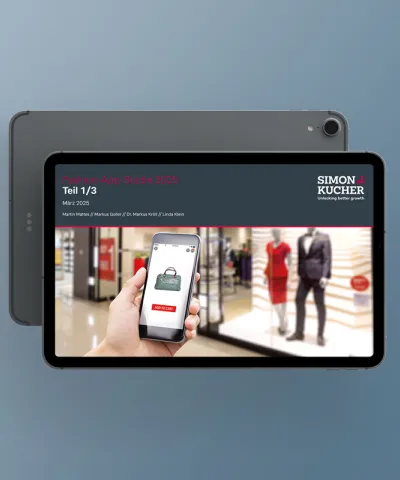From the COVID-19 pandemic to ongoing inflation, consumer-facing companies continue to encounter shifts and disruptions that are impacting the way they do business. The businesses that will succeed long term – amid all this change – are the ones that factor in broader trends and develop a clear commercial strategy for their teams to implement.
In the last few years, consumer-facing companies have had to navigate a series of short-term disruptions that have impacted how they operate and engage with their customers.
First, the COVID-19 pandemic forced companies to explore e-commerce offerings that met consumers where they were — at home. China’s subsequent lockdown impacted supply chains worldwide, making it difficult for raw materials and finished goods to reach their destinations. This resulted in retailers and manufacturers having to delay deliveries, cancel orders, or find alternative, more expensive methods of transport. More recently, rising inflation has prompted higher prices across the board, and businesses have had to reassess price points, undergo multiple rounds of price increases, and renegotiate existing contracts. Now, with a looming recession on the horizon, a potential energy crisis, and consumers being more cognizant of where they spend their money, consumer-facing companies may feel the need to adapt again — but this could limit their focus on longer-term concerns.
Consumer-facing companies have managed to stay afloat with short-term responses to short-term issues, but this can only take them so far. As we continue to navigate disruptions in the space, the companies that will thrive are the ones that have a clear strategy for the future. The path ahead is nebulous and filled with potential disruptions. Having a future-facing commercial strategy that factors in broad consumer trends will be key to surviving and finding the way forward.
This article explores what that looks like in practice, the key tenets of a commercial strategy, and outlines a proven method business leaders can embrace to get their commercial strategy right.
Getting Your Commercial Strategy Right
A successful commercial strategy relies on a clear framework that starts with a North Star and is supported by objectives, performance indicators, and enablers. While the North Star will guide the core principles of your strategy, how that strategy is executed will be determined by decisions on where to play and how to win in each of these playing zones.
Today, many organizations have the insights they need to know and understand what trends are driving their customers and their industry, but they aren’t setting intentions for how to address those shifts proactively. That must change.

What follows is a proven method business leaders of consumer-facing companies can embrace to establish a commercial strategy that truly makes sense for their organization.
Step #1: Set Your North Star
As with many things, a commercial strategy starts with setting a North Star. What is the next evolution for your business? What do you need to accomplish to truly stand out in your industry? How can you make an even greater impact for your customers? What are your dreams as a company? These are all questions that can guide your leadership team in setting a North Star.
When defining your North Star it is of essence to consider trends influencing your industry and consumer behavior. For example, food suppliers may need to respond to consumers shifting to more environmentally friendly products that are locally sourced.
Defining your North Star ultimately pushes you to put a stick in the ground indicating where it is you want to be as an organization in the long-term — and it sets a clear direction for getting there.
Some examples of North Stars from our customers include:
- Becoming the leading global trade platform in the industry
- Becoming the preferred supplier to customers [X,Y,Z]
- Being the preferred brand for consumer segments [X, Y, Z]
- Become market leader in our segment
- Establishing the business as the best supplier of locally sourced food products
Alongside your North Star, you also need a North Star metric. This should be a key performance indicator (KPI) that best describes if you are on your way to reaching the long-term vision and generally aligns with the value your company generates for consumers. For instance, for a consumer-facing company working towards becoming a preferred supplier to specific customers, this metric could be the year-on-year growth with these specific customers. On the other hand, a business that’s looking to become the preferred brand in their industry might measure brand advocacy as a core metric.
Now, the next question is, how do you get to your North Star? A successful commercial strategy needs clear decisions around where to play and how to win.
Step #2: Determine Where To Play
Once you have a North Star, it’s important to then identify what you need to do to execute on it. Decide where you will put your focus, both from a product perspective (e.g. which categories) and from a location and market perspective.
This could lead to a product market combination (PMC) approach, where you decide on having a differentiated approach by product/market fit, depending on consumer needs and behaviors in each given market. For instance, as a food producer, you could use your consumer insights to decide to focus on canned food in Eastern Europe markets, while prioritizing frozen foods in the Nordics. For each product category and market, you can then set separate ambitions and targets that ladder up to the primary North Star goal.
The next example illustrates how leveraging the right insights on product market combination approaches can help business leaders to make strategic decisions on where to play. One of our customers, a global sports brand, wanted to become the most preferred sports brand in the world. In terms of where they wanted to play, the answer was “everywhere.” However, they took a concerted, data-driven approach to determine how they would win in each market. In each country, they evaluated the popularity of a number of different sports, and cross-referenced their positioning in those markets. They then picked the top four most promising sports in that country, and executed a customized rollout strategy. This data-driven approach enabled our client to make the right strategic decisions on product market combinations.
Step #3: Establish How To Win
When you’ve set your product-market combinations, you need to determine the must-win battles which will make or break your strategy. What are the things that absolutely need to be done to help you reach your North Star? What are the barriers? This helps to determine what is needed from the organization to achieve success in defined playing zones.
To achieve success, each department should have a role that contributes to the overarching commercial strategy. For example, the design department can enhance product photos by removing backgrounds or image upscaling, thus improving customer appeal. This requires business leaders to map out coherent department and category strategies that support the overall strategy. This will include channel and distribution strategies, plans for entering different markets, methods for implementing the PMC approach outlined above, supply chain and warehousing strategies, a product innovation roadmap, and more. Only when business leaders take care of this organization-wide perspective, the North Star can be accomplished.
Step 4: Outline How To Implement
Landing on an implementation plan which is reasonable and can count on internal support is the last crucial step before the work starts. It is critical to have a good overview of what your team can and cannot accomplish and which resources are available. The strategy should include these considerations when it comes to setting a plan of action. How will the departments work together? What are the budgetary allowances for this strategy? What processes are required to make this a success? Consider these questions as you lay out your implementation plan.
A successful implementation will also require enablers within your organization:
- A bought-in People and Organisation team
- Processes that set teams up for success
- Data and tooling that facilitate tasks and decisions
- Investing in capabilities across departments
Change Is The Only Constant
As the consumer goods industry continues to shift and evolve, a strong commercial strategy is a must have.
The true value of a commercial strategy is that setting a North Star and supporting must-win battles and objectives makes the initiative concrete for your organization. It aligns departments, helping them to cooperate as they work together towards a common goal and moving the entire company forward in seemingly uncertain times. Based on our project experience, it requires consistent focus on a long-term vision to build resiliency, equipping companies to handle short-term disruptions as they come. This ultimately leads to more sustainable growth in the long term.








